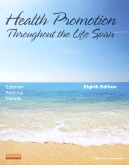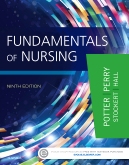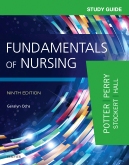| Course Number: | NR222 |
|---|---|
| Course Title: | Health and Wellness |
| Credit Hours: | 3 credits |
| Theory Hours: | 3 |
| Laboratory Hours: | 0 |
| Clinical Hours: | 0 |
| Place in Curriculum | Year 1, Semester 3 |
| Prerequisite: | BIOS252, MATH114, PSYC110 |
| Corequisite: | BIOS255, NR101 or NR103 |
Syllabus
Overview
Course Description
This course introduces students to health promotion and preventive care activities throughout the life span. These activities are explored through biological, psychological, spiritual, environmental, and sexual domains. A variety of theories emphasizing health and well-being will be explored throughout the course. Healthy People 2020 objectives are examined. Health-promotion assumptions basic to nursing practice are emphasized.
Textbooks and Resources
Required Textbooks
The following books are required for this course:
Edelman, C. L., Kudzma, E. C., & Mandle C. L. (2014). Health promotion throughout the life span. (8th ed.). St. Louis, MO: Mosby.
Potter, P., Perry, A., Stockert, P., & Hall, A. (2017). Study guide and skills performance checklists for Potter/Perry fundamentals of nursing (9th ed.). St. Louis, MO: Mosby Elsevier.
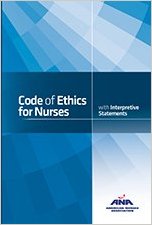
American Nurses Association. (2015). Code of ethics for nurses with interpretative statements. Washington, DC: Author.
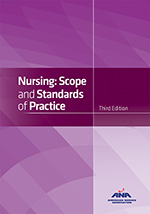
American Nurses Association. (2015). Nursing: Scope and standards of practice. (3rd ed.). Silver Spring, MD: Author.

American Psychological Association. (2010). Publication manual of the American Psychological Association (6th ed.). Washington, DC: Author.
Optional Textbooks
The following books are required for this course:
Physical Books and Supplies
To obtain all your books and supplies, visit the online Chamberlain bookstore at https://bookstore.chamberlain.edu/.
eBook Details
First Time Using VitalSource?
Step 1: View the VitalSource Video
Step 2: Register with VitalSource Bookshelf Online
- Click the cover or title of your eBook. A new window will open.
- Enter email address and password. Bookshelf Online will open.
Step 3: Access the Desktop and Mobile Versions
You must complete Step 2 prior to using the desktop or mobile versions.
Already Registered? 3 Ways to Access Your eBooks

Online
Access your eBook by clicking on the book cover or title in the syllabus page. Bookshelf Online will open.

Desktop
Download your eBooks and use them whether you're connected to the Internet or not.

Mobile
Download the app and get your eBooks on your iPhone, iPad, or Android device.
Program Outcomes
The outcomes for the Bachelor of Science in Nursing (BSN) degree program are as follows:
1
Provides individualized comprehensive care based on theories and principles of nursing and related disciplines to individuals, families, aggregates and communities, from entry to the healthcare system through long-term planning.
2
Demonstrates leadership and collaboration with consumers and other healthcare providers in providing care and/or delegating responsibilities for health promotion, illness prevention, health restoration, health maintenance and rehabilitative activities.
3
Communicates effectively with patient populations and other healthcare providers in managing the healthcare of individuals, families, aggregates and communities.
4
Integrates clinical judgment in professional decision making and implementation of the nursing process.
5
Demonstrates responsibility for continued personal and professional development through enrollment in graduate education, continuing education degree programs, professional reading and participation in professional organizations and community service.
6
Implements professional nursing standards by practicing within the legal definitions of nursing practice and acts in accordance with the nursing code of ethics and American Nurses Association (ANA) standards of practice.
7
Practices in established professional roles consistent with entry-level BSN graduates to provide cost-effective, quality healthcare to consumers in structured and unstructured settings.
8
Incorporates evidence-based practice in the provision of professional nursing care to individuals, families, aggregates and communities.
Course Outcomes
Chamberlain College of Nursing courses are built to align course content with specific Course Outcomes (COs). The COs define the learning objectives that the student will be required to comprehend and demonstrate by course completion. Unit outcomes provide further detail to support learner achievement of specific COs and are listed within each unit under the introduction. Whenever possible, a reference will be made from a particular assignment or discussion back to the CO that it emphasizes.
Upon completion of this course, the student will be able to do the following.
1
Discuss the professional nurse's role in health-promotion activities. (POs 1 and 2)
2
Examine theories and concepts related to health-promotion behaviors. (POs 1 and 2)
3
Discuss health promotion, illness prevention, health maintenance, health restoration, and rehabilitation in relation to the nurse's role in working with various populations. (POs 1 and 2)
4
Discuss the influences of moral, ethical, and legal principles on professional nursing practice. (PO 6)
5
Identify effective communication with clients and other healthcare providers. (PO 3)
6
Discuss attitudes and actions that influence personal, educational, and professional development. (PO 5)
7
Identify health-promotion strategies throughout the life span. (POs 1 and 2)
Key Concepts
1
Nursing and Health Promotion: History and Theories
- Nurses Promoting Health: Influences From Our Past
- Chamberlain Care and Health Promotion
- Definitions and Models of Health
- Levels of Prevention
- Cost of Health and Illness
- Healthy People 2020
2
Nursing as a Healthcare Profession
- The Ethics of Healthcare
- The Nursing Process
- The Practice of Nursing
- Behaviors That Influence Health and Wellness
3
Culturally Competent Care
- Health Variables of Individuals and Groups
- Influence of Family on Health Choices
- Chamberlain Care and Cultural Competence
4
Teaching and Learning
- Health Education
- The Nursing Process Versus the Learning Process
- Barriers to Teaching in the Healthcare Setting
- Barriers to Learning in the Healthcare Setting
5
Therapeutic Communication: Linking Nurses to Those in Their Care
- Types of Communication
- Mechanisms of Communication Strategies
- Therapeutic Communication
- Communication, Attitudes, and Values
- Interprofessional Collaboration
6
Nursing and Wellness Across the Life Span
- Theories of Development
- Health Promotion Needs and Risks Across the Life Span
- Nursing and Caring for all Ages
7
Health Promotion Strategies and Interventions
- Defining Community Health and Wellness
- Threats to the Health of Individuals Within Communities
- Nursing's Role in Community, Family, and Individual Health Promotion
Learning Plan
Download and review the NR222 Health and Wellness Learning Plan. This learning plan provides a list of unit outcomes and detailed key topics covered in the course.
Required Uniform Assignments (RUAs)
Required Uniform Assignments (RUAs) are essential elements of assessment that are consistent across the curriculum at Chamberlain College of Nursing. These assessments help measure and track students' progress in meeting the BSN Program Outcomes. Each RUA is course-specific and required in both online and campus courses. Download the Health Promotion Project guidelines and grading rubric to begin planning for the successful completion of this assignment.
If you have any questions about the assignment please speak to your instructor.
Course Schedule
| Unit, COs, and Topics | Readings | Assignments |
|---|---|---|
Unit 1
| Edelman, C. L., Kudzma, E. C., & Mandle C. L. (2014). Health promotion throughout the life span. (8th ed.). St. Louis, MO: Mosby.
Potter, P. A., Perry, A. G., Stockert, P., & Hall, A. (2017). Fundamentals of nursing (9th ed.). St. Louis, MO: Elsevier.
| Study questions Faculty Selected Assignment, as instructed |
| Unit 2 COs 1, 2, 3, and 4 Nursing as a Healthcare Profession | American Nurses Association. (2015). Nursing: Scope and standards of practice (3rd ed.). Silver Spring, MD: Author.
American Nurses Association. (2015). Code of ethics for nurses with interpretative statements. Washington, DC: Author.
Edelman, C. L., Kudzma, E. C., & Mandle C. L. (2014). Health promotion throughout the life span. (8th ed.). St. Louis, MO: Mosby.
Potter, P. A., Perry, A. G., Stockert, P., & Hall, A. (2017). Fundamentals of nursing (9th ed.). St. Louis, MO: Elsevier.
| Alternate Style Exam Questions Tutorial Study questions Faculty Selected Assignment, as instructed |
| Exam 1 (Units 1 and 2) | ||
| Unit 3 COs 1, 2, 3, 6, and 7 Cultural Competence | American Nurses Association. (2015). Nursing: Scope and standards of practice. (3rd ed.). Silver Spring, MD: Author.
American Nurses Association. (2015). Code of ethics for nurses with interpretative statements. Washington, DC: Author.
Potter, P. A., Perry, A. G., Stockert, P., & Hall, A. (2017). Fundamentals of nursing (9th ed.). St. Louis, MO: Elsevier.
Edelman, C. L., Kudzma, E. C., & Mandle, C. L. (2014). Health promotion throughout the life span (8th ed.). St. Louis, MO: Mosby.
| Study questions Faculty Selected Assignment, as instructed |
| Unit 4 COs 1, 2, 3, 4 6, and 7 Teaching and Learning | American Nurses Association. (2015). Nursing: Scope and standards of practice (3rd ed.). Silver Spring, MD: Author.
Edelman, C. L., Kudzma, E. C., & Mandle, C. L. (2014). Health promotion throughout the life span (8th ed.). St. Louis, MO: Mosby.
Potter, P. A., Perry, A. G., Stockert, P., & Hall, A. (2017). Fundamentals of nursing (9th ed.). St. Louis, MO: Elsevier.
U.S. Department of Health and Human Services. (2016). Educational and community-based programs. Healthy People 2020 website. Retrieved from http://www.healthypeople.gov/2020/topics-objectives/topic/educational-and-community-based-programs | Study questions Faculty Selected Assignment, as instructed |
| Exam 2 (Units 3 and 4) | ||
| Unit 5 CO 1, 2, 3, 5, 6, and 7 Therapeutic Communication | American Nurses Association. (2015). Nursing: Scope and standards of practice. (3rd ed.). Silver Spring, MD: Author.
Edelman, C. L., Kudzma, E. C., & Mandle, C. L. (2014). Health promotion throughout the life span. (8th ed.). St. Louis, MO: Mosby.
Potter, P. A., Perry, A. G., Stockert, P., & Hall, A. (2017). Fundamentals of nursing (9th ed.). St. Louis, MO: Elsevier.
Pope, B., Rodzen, L., Spross, G. (2008). Raising the SBAR: How better communication improves patient outcomes. Nursing, 38(3), 41–43. doi:10.1097/01.NURSE.0000312625.74434.e8 | Health Promotion Project (RUA) Study questions Faculty Selected Assignment, as instructed |
Unit 6 | Potter, P. A., Perry, A. G., Stockert, P., & Hall, A. (2017). Fundamentals of nursing (9th ed.). St. Louis, MO: Elsevier.
Edelman, C. L., Kudzma, E. C., & Mandle, C. L. (2014). Health promotion throughout the life span. (8th ed.). St. Louis, MO: Mosby.
| Study questions Faculty Selected Assignment, as instructed |
| Exam 3 (Units 5 and 6) | ||
| Unit 7 COs 1, 3, and 7 Health Promotion Strategies and Interventions | U.S. Department of Health and Human Services. (2016). 2020 LHI topics. Healthy People 2020 website. Retrieved from https://www.healthypeople.gov/2020/leading-health-indicators/2020-LHI-Topics
Potter, P. A., Perry, A. G., Stockert, P., & Hall, A. (2017). Fundamentals of nursing (9th ed.). St. Louis, MO: Elsevier.
Edelman, C. L., Kudzma, E. C., & Mandle, C. L. (2014). Health promotion throughout the life span. (8th ed.). St. Louis, MO: Mosby.
| Study questions Faculty Selected Assignment, as instructed |
| Unit 8 COs 1, 2, and 7 Moving From Health Promotion to Health Maintenance | Review all readings, as needed. | Final Exam |
Attendance Policy
Regular attendance and consistent participation within the classroom, lab, and clinical experiences facilitate the achievement of course outcomes set forth in the course syllabi. Students must arrive on time and stay for the duration of the class meeting, lab, and/or clinical experience. Late arrival may result in denied access to the class. Absences and/or tardiness from lecture, pre-clinical, clinical (including pre- and post-conferences), and/or lab experiences (including pre- and debriefing) may prohibit students from completing all components of the nursing course, resulting in course failure.
Attendance is tracked for all eight weeks of the session on a course-by-course basis and is recorded daily based on academic events. An academic event for onsite courses is defined by attending scheduled class meetings. An academic event for online courses is defined by submitting a class assignment, participating in threaded discussions, or completing quizzes and exams. An academic event for blended courses is defined by attendance in the onsite component or by submitting a class assignment, participating in threaded discussions or completing quizzes and exams in the online component.
Due Dates for Assignments and Exams
Unless otherwise specified, the following applies.
- Access to the course begins on Sunday at 12:01 a.m. (MT) during preview week.
- All completed assignments are to be submitted to the Dropbox on or before Friday by 5:00 p.m. Mountain Time (MT) or as specified by your faculty.
- All quizzes and exams, if applicable in your course, are offered at specific times.
- Campus Courses: Campus faculty will share the date, time, and location with students at the beginning of each session.
- Online Courses: Online faculty will share online exam schedule with students during preview week in a course announcement. Students should refer to the posted announcement for the specific dates and times for their exam schedule.
Note: In Unit 8 the assignments will be due by Wednesday at 11:59 p.m. MT.
If you are taking this course on campus, a course calendar includes detailed information related to activities and due dates may be available for downloading from Doc Sharing. Please check with your instructor for more information.
If you are taking this course online, Please be advised that you may be required to take your tests on the campus in a proctored environment. Your campus will post the date, time and location of exams. If testing will take place online, the online faculty will share the exam schedule with students during preview week in a course announcement. Students should refer to the posted announcement for the specific dates and times for their exam schedule.
Assignment Values and Letter Grades
All course assignments and examinations must be completed in order to pass the course.
The maximum score in this class is 1,000 points. The categories, which contribute to your final grade, are weighted as follows.
| Assignment | Points | Weighting |
|---|---|---|
| Examinations* | ||
| Exam 1 | 125 | 12.5% |
| Exam 2 | 125 | 12.5% |
| Exam 3 | 125 | 12.5% |
| Final Exam | 150 | 15% |
| *Must achieve an average of 76% or higher to pass the course. | ||
| Assignments | ||
| Health Promotion Project (RUA) | 100 | 10% |
Faculty Selected Assignments | 375 | 37.5% |
| Total Points | 1,000 | 100% |
| Letter Grade | Points | Percentage |
|---|---|---|
| A | 940–1,000 | 94% to 100% |
| A- | 920–939 | 92% to 93% |
| B+ | 890–919 | 89% to 91% |
| B | 860–889 | 86% to 88% |
| B- | 840–859 | 84% to 85% |
| C+ | 810–839 | 81% to 83% |
| C | 760–809 | 76% to 80% |
| F | 759 and below | 75% and below |
Teaching/Learning Methods
Examples include, but are not limited to
- assignments;
- case studies;
- discussion;
- experiential learning
- group assignments;
- lectures; and
- multimedia presentations.
